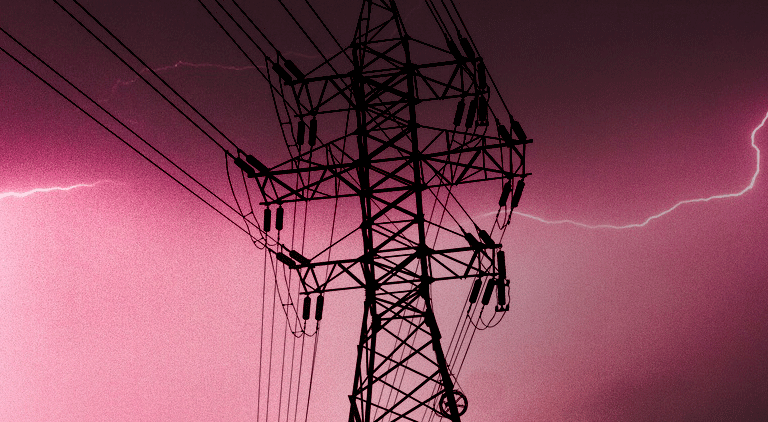Strategic national assets, lost in transmission
By EPR Magazine Editorial June 8, 2019 3:05 pm IST
By EPR Magazine Editorial June 8, 2019 3:05 pm IST

For electric power to get to the final consumers in proper form and good quality, losses along the lines must be reduced to the barest minimum. The industry experts discuss out what testing and checking are done to detect the faults and error in transmission lines.
Availability of electric power has been the most powerful vehicle for facilitating economic, industrial and social developments of any nation. Losses at ultra-high voltage AC and HVDC are not a major area of concern, as these facilities in India are truly world class. At intra state level, many transmission lines definitely need to be upgraded. However, AT&C losses becomes a matter of great concern. Harish Kumar Agarwal CEO –Supreme & Co. Pvt. Ltd. says, “It is unfortunate that DT level metering envisaged by myriad DISCOM revival schemes have not been properly and adequately implemented.”
Grid resilience dependence on transmission lines
Grid resilience in a power system is absolutely critical. It encompasses technology, physical infrastructure, IT and communications, matured market, and effective regulatory mechanism. System should continuously strive to shorten scheduling, dispatch and settlement time. India, technologically and geographically, is well placed to be fulcrum of a mega cross country grid. The HVDC link with Bangladesh has facilitated the replacement of expensive power produced in Bangladesh by liquid fuel plants by economic power supplies from India. Similarly, hydel power supplies from Nepal to India can help India balance intermittent renewable power important for viability for India ‘s ambitious renewable programme. Agarwal says, “Mega grid with matured market and short interval scheduling, dispatch and settlement makes it possible to shut unviable plants and improve the PLF of efficiently run plants.”
Protection and surveillance for transmission lines
In today’s world of wirelessly connected devices and facilities, operating at different levels of digital automation, cyber-attacks are far a bigger area of concern than physical attacks.
However, transmission lines are vulnerable to natural disaster. These lines are critical and strategic national assets, and disruption may have serious implications. Adequate redundancy is critical for robustness of the grid. Also, all transmission line owners must mandatorily be required to own adequate ERS towers or should have adequate tie up with suitably equipped and experienced ERS solution providers, says Agarwal.
Testing and checking to detect defects/shortcomings in the work of transmission lines
According to Sharan Bansal, Director, Skipper Limited, to detect defects or errors that arise in transmission lines, following activities are carried out:
Foundation activities
Tower erection work
Stringing work
Power transformer protections
Power transformers need protection from unexpected voltage or current. The moment there is an abnormal voltage, there is a huge electromotive force generated within the transformers. Sanjib Mitra, Country Head Sales & Marketing, Electrotherm India Limited says, “The transformers are not designed to withstand such force. Because of heat, the oil gets heated up quickly and there is always a threat of transformer oil catching fire in highly unlikely situation.”
In such scenario, generally Buchholz & PRV are basic protections. OTI and WTI [protection devices provided in transformer marshalling box] is wired up to controlled station/Scada units for generating alarm/trip signals to the upstream/downstream circuit breakers. However, in large power transformers, current transformers are used for restricted earth fault protection to safeguard any internal faults and differential protection to cover up cable/line faults including the transformer zone.
Fault monitoring methods in power transformers
For fault monitoring, Scada inputs are taken to control rooms from all these devices either through twisted pair cable or through multicore control cable; better is FO cables, which are used in power stations. Nitrogen system fire protection is recommended for prevention of accidental fire hazard in power transformers. Nowadays, in almost all substations above 10 MVA, NIFPS system is connected with transformer by mechanical pipe line and nitrogen cylinders. Mitra says, “Smart annunciations connected in control system can generate fairly advance notice, which can prevent accumulation of large faults and thus save power transformers and associated cables.”
Partial discharge analysis on power transformers
Partial discharge, as defined by IEC 60270, are local dielectric discharge under high voltage field stress in a transformer. Insulation property diagnosis is done though this test. Detection of presence of moisture or cavity in the insulation material is the main purpose of this test. Any sorts of surface discharge or corona is also detected through PD Test. UHF method/voltage stress method both are popular method for detection.
We need to depend on the testing result for proper certification of their quality and only a developed testing method can ultimately ensure all these things
Sharan Bansal, Director, Skipper Limited
Smart annunciations connected in control system can generate fairly advance notice, saving power transformers and associated cables
Sanjib Mitra, Country Head Sales & Marketing, Electrotherm India Limited
Hydel power supplies from Nepal to India can help India balance intermittent renewable power important for viability for India‘s ambitious renewable programme
Harish Kumar Agarwal, CEO –Supreme & Co. Pvt. Ltd.
We use cookies to personalize your experience. By continuing to visit this website you agree to our Terms & Conditions, Privacy Policy and Cookie Policy.